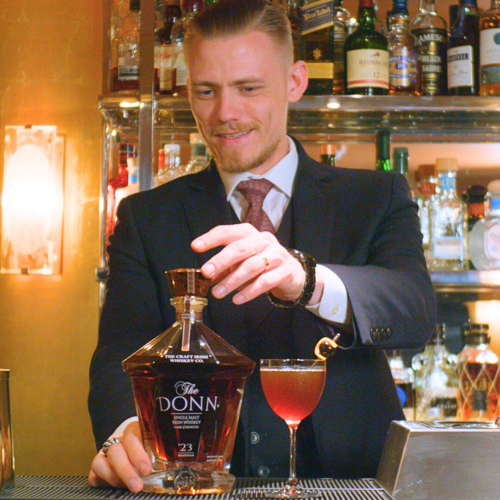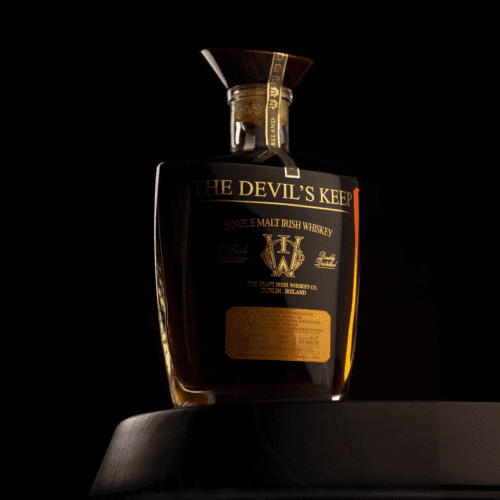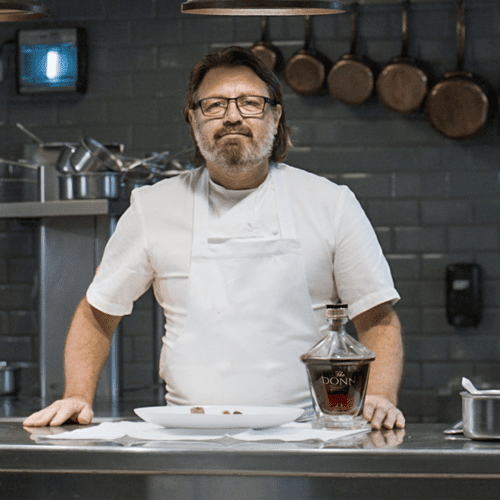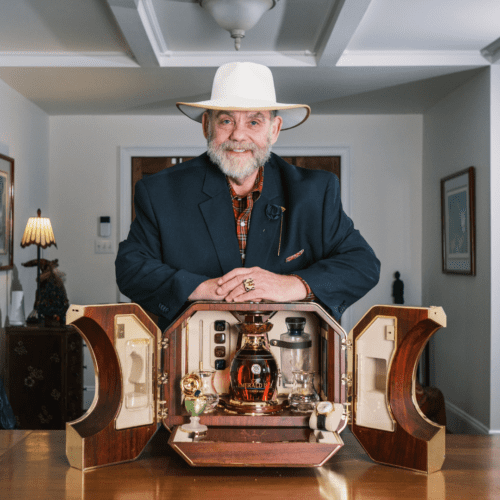Whiskey History 101
It’s time for something fun. We’re going to pour through over a thousand years of whiskey history and distil it down to just a few easy paragraphs. Where did whiskey originate? Let’s start with the name. The word whiskey comes from an anglicisation of “uisce beatha” — Old Irish for “water of life.” The liquid itself is the product of distillation methods that made their way from the Middle East into Ireland and Scotland by way of travelling monks as early as 1000 AD.
When was whiskey first made? Today both countries argue over who invented it first. It’s a contentious subject, but all we can really go by is a written record. The history of Scotch whisky famously points to a tax roll from 1494 in which King James IV granted malt, “to Friar John Cor, by order of the king, to make aquavitae.”
However, the first written record of making whiskey on the Emerald Isle predates the Scottish example by more than 170 years! In the Irish Annals of Clonmacnoise, from 1405, it was documented that the head of a clan died after “taking a surfeit [excessive amount] of aqua vitae.” Which was 90 year prior to Scotland’s oldest record. However what predates this is The Red Book Of Ossory, written in 1324 & kept by the @rcblibrary in Dublin which contains evidence of the production of Aqua Vitae In Ireland. So you can be sure Irish whiskey was made prior to this book being written. Some say far earlier, even as early as the 6th century. If it was this early and we simply don’t have a written record, the first country to distil was possibly both, as back then the northern part of Ireland and the west coast of Scotland (including Islay) were under one Kingdom called Dál Riada.
For the next two centuries, whiskey-making was a technical skill reserved exclusively for monks, until Henry VIII of England dissolved the monasteries and distillation became the purview of the general public. This was the mid-1500s, and not long after, we start to see the proliferation of whiskey distilleries across the British Isles. In 1608 the Old Bushmills Distillery in Northern Ireland was granted a licence—it’s the oldest continuously operating whiskey producer on the planet.
The Birth of the Irish Pot Still
Soon after the Acts of Union formed the United Kingdom in 1707, the Crown started to tax whiskey makers significantly. One notorious example was the Malt Tax of 1785. This was brought about due to bootlegging of bottled Irish whiskey to America to avoid paying the British Crown its excise taxes. So the Crown taxed the production of malted barley, which was then the main ingredient to making Irish Whiskey. By taxing the malted barley, the Crown didn’t care if the Irish bootlegged the final bottles as they received the tax upfront.
The excise was so severe that it pushed most distillers into the faraway hills of Ireland, where they could illicitly produce their precious liquid far removed from the prying hands of the taxman. But for the commercial distillers around Dublin (under the eye of the watchful Crown), it was a huge blow as malt was needed to make whiskey.
Or was it?
Malting barley simply means germinating the barley until the starch converting enzymes are activated and the starches are converted into fermentable sugars. The grain is then rapidly dried. The yeast eats the sugar and makes alcohol, so without using 100% malted barley it was thought making whiskey was unfeasible. That is until some intrepid Irishmen began testing mashbills (recipes for whiskey) by adding some unmalted barley to the malted barley mix, in the hope the sugars from the malt would carry the unmalted barley through and thus lower the taxes. And it worked! In fact they pushed for less and less malt to save on taxes until they found they could go as low as 30% malt and still have enough sugars to ferment alcohol. This combination of unmalted and malted barley was the birth of a new style of whiskey. Irish Pot Still whiskey. By 1828 government records show that Pot Still whiskey accounted for 98.54% of Ireland’s whiskey output!
With lower taxes and more profits, It allowed huge growth Internationally and Irish Whiskey became the world’s most popular and revered category of whiskey, supplying over 80% of global whiskey consumption.
Dark days for Irish whiskey
Meanwhile in Kilmarnock, Scotland, a grocer named John Walker started blending malts from myriad legal producers and bottling the product under his own label. Immediately thereafter, the United Kingdom rescinded restrictive taxes on Scottish producers. In 1823, they gave all moonshiners the opportunity to go above board by paying a nominal fee. This is why if you look at many of your favourite Scotch labels today you’ll likely see an establishment date of somewhere in the 1820s.
Distillation technology was revolutionised in 1830 when an Irish inventor named Aeneas Coffey patented the still that today bears his name. As opposed to the batch production of pot stills, his invention allowed for continuous distillation—a much more efficient and economical form of whiskey making that also results in a lighter tasting (some would say inferior) liquid. The continuous still was very efficient. You could distil anything with sugars such as old potato skins. The still allowed the spirit to be distilled up to nearly 98% pure ethanol, which takes all the flavour from the barley. Irish whiskey masters rightfully rejected such a still as something to make whiskey on. So Aeneas Coffey took his invention to Scotland.
This new methodology gives birth to blended whiskey. And most notably…Blended Scotch, which would soon go on to become the most prevalent category of whiskey on earth for a time.
But it could only eclipse Irish Whiskey supremacy thanks to a number of external circumstances swirling around the 1920s. For one: World War I from 1914-1918 brought with it German U-Boats sinking passenger vessels at will in Irish waters. In fact, it’s what brought the Americans into the war. So it became too dangerous to distribute Irish Whiskey during this time. The barley was rerouted to feed British Soldiers so making whiskey became increasingly difficult during this time.
By 1919 when World War I was finally over and Irish whiskey distribution could return, American Prohibition came into law. The US was the number one market for Irish Whiskey and the taps were turned off completely with the passage of the dreaded Volstead Act of 1919—effectively turning the country into a dry state. At the same time, Ireland achieved independence from Great Britain. The Crown was keen to have its native Scotch outpace and outcompete the now-foreign whiskey coming out of the Emerald Isle. With trading embargoes put on Ireland for distribution to Commonwealth countries, the Irish whiskey market was brought to its knees.
By the time that the US emerged from its failed experiment with teetotalism in 1933, the Irish Whiskey market was almost entirely decimated. By the end of World War II in 1945, Irish whiskey had a 99% market share drop. From over 12million cases produced at its peak, to fewer than 100,000.
Over 16 million American soldiers fought in World War II, and with Scottish whiskey being the favoured drink of the British Crown, this is what the soldiers had access to. So when the soldiers returned to America with a taste for Scotch, this opened up a market previously dominated by the Irish.
And in the 1960s we see the birth, in earnest, of the Single Malt Scotch market—with the introduction and exportation of The Glenfiddich out of Dufftown, Scotland.
A New Dawn
In the 21st Century new trends emerge. Consumer demand for full-flavoured, premium spirit starts to explode, driven in large part by the emerging markets of East Asia—China specifically. We see the popularity of Bourbon and Japanese Whiskey at all-time highs. Vintage Scotch fetches record prices at auction.
And then the sleeping giant awakens.
The resurgence of the Celtic Tiger, itself: The Great Irish Whiskey Renaissance. For the past decade, Irish whiskey has been the world’s fastest growing whiskey. Premiumisation among the segment is astronomical. In 2021, a single release from The Craft Irish Whiskey Co. —The Emerald Isle—shattered a world-record to become the most expensive whiskey on the planet. Today you can’t find a bottle of it for under $3 million USD.
How The Craft Irish Whiskey Co. is changing the future of Irish whiskey
While today we know that Ireland was the first to export whiskey globally and the earliest written evidence we can find of who invented whiskey was the Irish – those debates about when was whiskey invented or where was whiskey invented, will rumble on for centuries to come. But we’ve certainly come a long way from the first whiskey ever made by those nomadic monks of the previous millennium. Whatever style of whiskey you’re into and whatever price you’re willing to pay for it, there are now more options than ever before. Indeed, with a rich history of whiskey that spans over a thousand years, there’s never been a more exciting time to be a whiskey drinker than right now!
And The Craft Irish Whiskey Co. is leading the charge. We’re changing the future of Irish whiskey by honouring its past but adding 21st century science and experience to revolutionise the whole experience. From the world’s most expensive whiskey, to the #1 luxury design on the planet in 2022, and the world’s Best Irish Single Malt at the World Whiskies Awards, these rare releases have reimagined Irish whiskey’s potential as a luxury product and collectable.
Jay Bradley, a devout student of Irish Whiskey history, founded the brand with one mission in mind: to regain the native spirits’ edge over Scotch. Unprecedented growth for the Irish Whiskey category was great, but Irish Whiskey is still viewed as secondary to Scotch—especially when it comes to premium single malt. Jay Bradley is boldly reminding aficionados that it was Irish, not Scotch, that ruled the whiskey world. And so it will again. In just four short years, The Craft Irish Whiskey Co. has come a long way in changing the narrative, collecting dozens of international awards and raising the bar high along the way.
Now Irish whiskey is once again in the conversation for world’s most revered liquids—the sort of luxury goods that investors go crazy over. And visionaries like Bradley are making it happen, drawing from a proud past in order to write an exciting future for the category. Just don’t call it a comeback. Premium Irish Whiskey has been here for years.










